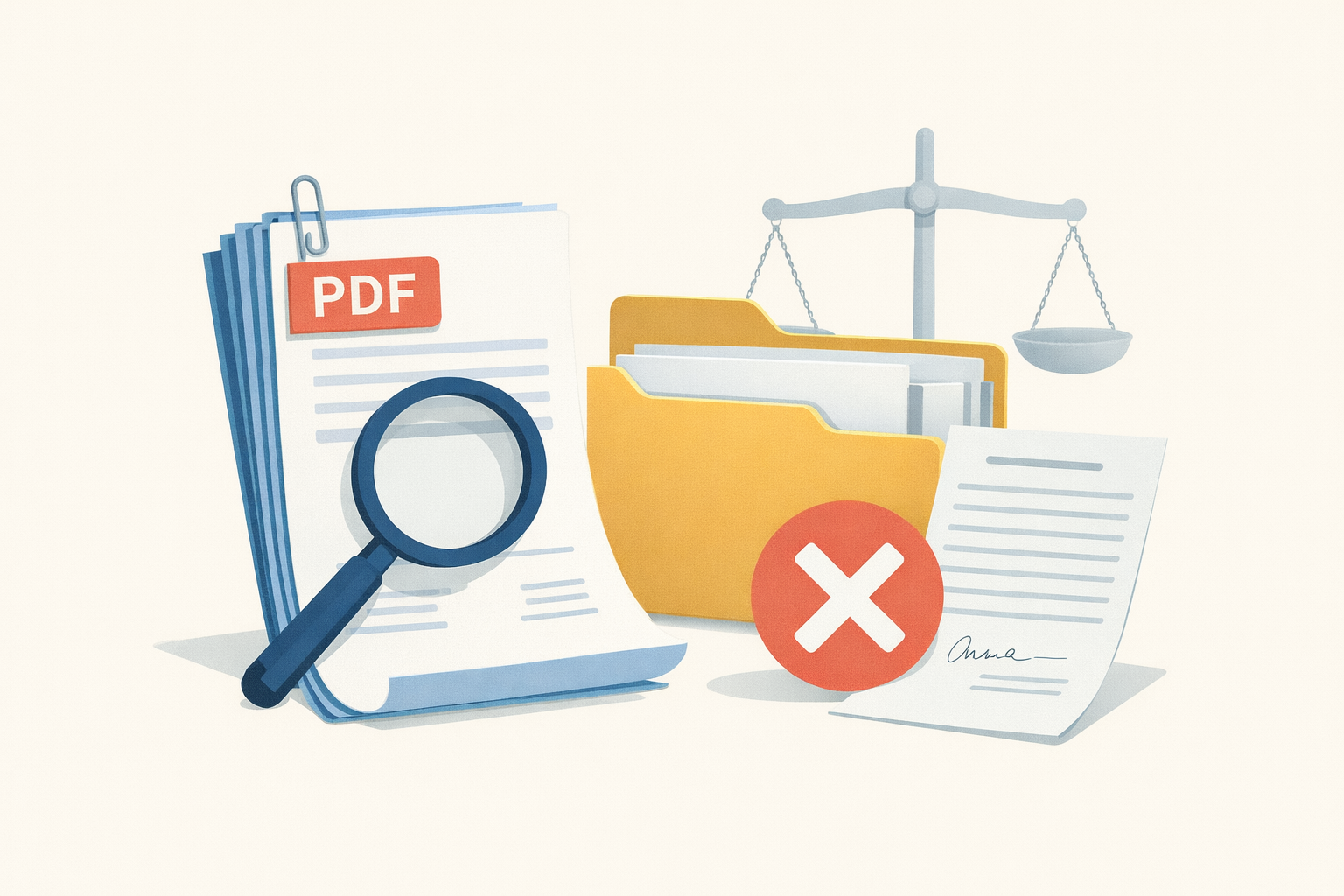Organizations in the EMEA region can collect and review emails and documents within Microsoft 365. This guide shows how to set up your environment, execute efficient email collection strategies, streamline document review, and produce audit-ready reports.
According to User Centrics, research shows that about two-thirds of European businesses express uncertainty about compliance with data-protection laws. So, let's look into how you can prepare your Microsoft 365 environment for eDiscovery, execute email and document collection, and more.
What Is Included in a Compliance Audit?
A compliance audit examines how well a company follows laws, policies, and internal controls. It confirms that your organization's data management, communication, and storage processes meet regional standards, including those required in the EMEA region.
There are three main areas auditors review:
- Policy and process reviews
- Email and document management
- Reporting and audit trails
Policy and Process Reviews
Auditors start by looking at written policies and data management procedures. They check whether your company's practices match its compliance commitments and whether employees understand how to handle regulated data.
Email and Document Management
Emails and shared files are often the largest sources of compliance risk. Microsoft 365 compliance tools help identify, retain, and secure these records.
Reporting and Audit Trails
Auditors review your documentation history to confirm that records are complete and accurate. Tools such as audit logs and activity reports support this process and create transparency.
Step 1: Preparing Your Microsoft 365 Environment
Start by reviewing user access levels to confirm that only authorized individuals can view or edit specific content. Then, define retention policies to keep data for the right amount of time. This step supports Microsoft 365 compliance and helps maintain audit consistency.
Organizing Data Governance Through Microsoft Purview
Microsoft Purview, formerly known as the Compliance Center, allows teams to manage data governance in one place. Use it to track content across different departments, set up data loss prevention rules, and monitor compliance performance in real time.
Classifying and Labeling Sensitive Content
Content classification helps separate regular files from confidential or regulated information. Use sensitivity labels and metadata tags to identify files that may be required for an EMEA audit. Proper classification strengthens your compliance audit tools and simplifies later review steps.
Step 2: Collecting Emails and Documents Efficiently
Start with eDiscovery in office 365, via Microsoft 365's built-in tools, to locate emails and documents that meet specific audit needs. Use keywords, time ranges, or sender filters to narrow your results. Targeted searches reduce the amount of irrelevant data and make it easier to find information that matters.
Building Strong Email Collection Strategies
Email collection strategies should focus on completeness and consistency. Identify custodians, or data owners, early in the process.
Communicate clear instructions about preserving relevant messages. Avoid manual downloads or forwarding, since these can change metadata. Microsoft 365 compliance features keep emails in place while allowing secure access.
Exporting Data Securely for Review
Once collected, export data into a secure review platform. Using an eDiscovery platform like Logikcull maintains a defensible chain of custody. It also saves time by organizing files and eliminating duplicates.
Step 3: Reviewing Data with Legal Precision
Microsoft 365 includes features that allow users to filter emails and documents by date, keyword, or user activity. These tools help reviewers reduce large datasets into smaller, more relevant groups. Features such as deduplication and keyword highlighting make it easier to find the most useful evidence and avoid reviewing the same files multiple times.
Collaborating Securely with Legal Teams
Effective legal document review platforms make collaboration simple. Teams can comment, tag, and categorize files without changing their original content. Assigning roles and permissions within Microsoft 365 prevents unauthorized edits and keeps the document review process consistent across departments or external law firms.
Integrating Logikcull for Organized Review
Using an eDiscovery software for law firms like Logikcull allows for better control and speed. It automates repetitive tasks, helps manage review stages, and provides a clear record of all reviewer actions. It supports compliance goals while improving the overall accuracy of your audit preparation.
Step 4: Managing Compliance Documentation and Reporting
Microsoft 365 compliance tools allow you to generate reports that summarize collection, review, and access activity. The reports should show who handled each file, when it was reviewed, and how it was categorized. Using Logikcull alongside Microsoft 365 simplifies this process by creating audit-ready exports in consistent formats.
Protecting Metadata and File Integrity
Metadata shows when files were created, changed, or shared. Maintaining this data is critical to demonstrate that evidence has not been altered. Avoid moving or renaming files outside your approved eDiscovery platform, as this can disrupt the metadata trail. Keeping files intact strengthens the accuracy of your document review process.
Frequently Asked Questions
How Does Microsoft 365 Support Cross-Border Compliance in the EMEA Region?
Microsoft 365 offers strong data protection measures for companies operating in multiple EMEA countries. Its data residency options let organizations choose where information is stored, which supports compliance with regional privacy rules such as GDPR.
The platform's compliance center includes built-in controls for retention, encryption, and access restrictions.
What Are the Best Practices for Email Collection Strategies During Legal Holds?
Effective email collection strategies start with identifying key custodians and setting up legal holds that prevent accidental deletion. Microsoft 365 allows you to place holds on entire mailboxes or specific folders while keeping data accessible for review. Clear communication with employees during this process is important so they understand preservation responsibilities.
How Do Legal Document Review Platforms Integrate with Microsoft 365?
Many legal document review platforms connect directly to Microsoft 365 through secure APIs. This connection allows teams to move collected data into review environments like Logikcull without manual downloads. The integration maintains file structure, metadata, and user permissions.
EMEA Audit Preparation
By using Microsoft 365 and an eDiscovery platform like Logikcull, organizations across EMEA can simplify email and document collection, streamline review, and produce accurate reports.
At Logikcull, we help law firms move faster, bill smarter, and make clients happier. Our simple eDiscovery platform lets you manage discovery in-house. Upload data, uncover key facts instantly, and review documents securely with Culling Intelligence.
Get in touch today to find out how we can help with your compliance needs.




